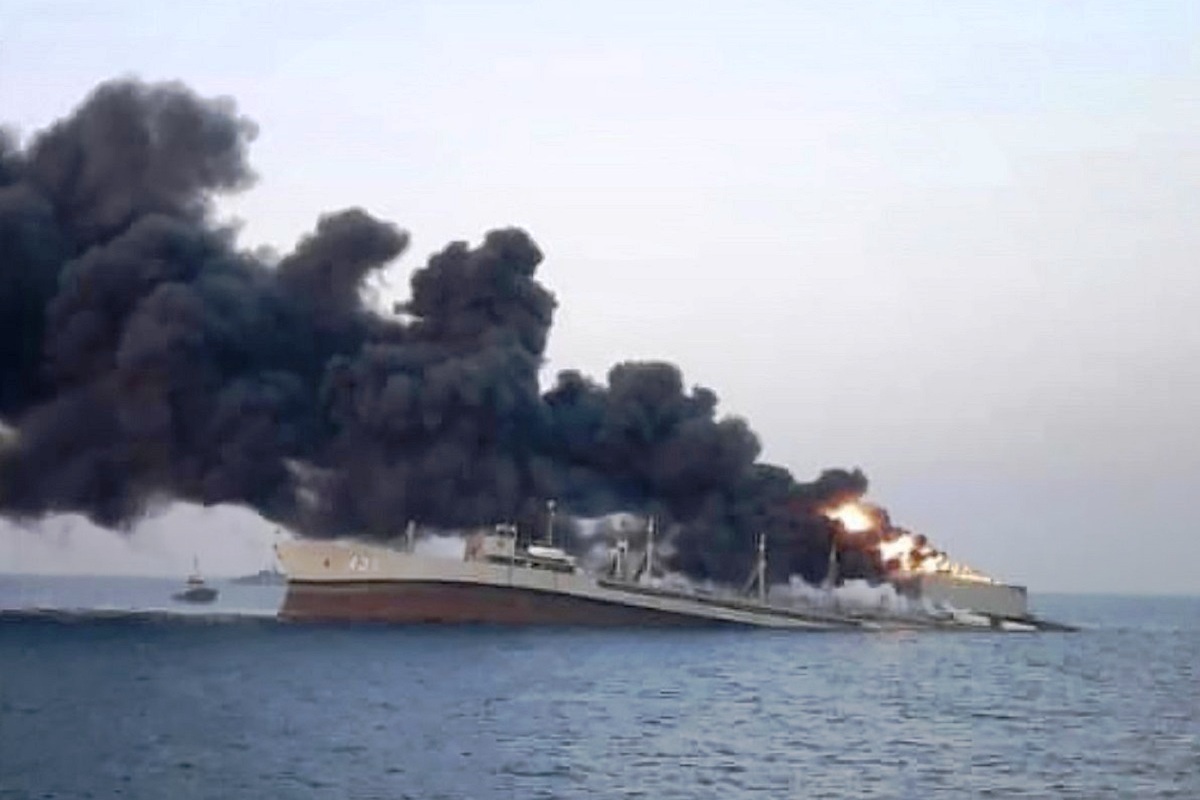There is much that is fogbound about Wednesday’s fire that devastated the Iranian navy’s largest warship, which later sank in the Gulf of Oman under circumstances as yet unclear. Contextualised with the tensions with the West over matters nuclear, this must rank as a terrible setback that the country’s defences have suffered in recent years.
The ship sank near the Iranian port of Jask, some 1,270 kilometers south-east of Tehran on the Gulf of Oman near the Strait of Hormuz ~ the narrow mouth of the Persian Gulf. Satellite photos from Planet Labs Inc. analysed by Associated Press showed the Kharg off Jask with no sign of a fire as late as 11 a.m. on Tuesday.
Advertisement
Photos circulated on Iranian social media showed sailors wearing life jackets evacuating the vessel as a fire burned behind them. Videos of thick, black smoke rising from the ship were published early on Wednesday morning. Satellites from the U.S. National Oceanic and Atmospheric Administration, that track fires from space, detected a blaze near Jask that started just before the time of the fire reported by Iran’s Fars news agency.
Twenty-four hours after the disaster, Iranian officials offered no cause for the fire aboard the Kharg, though they said an investigation had begun. While this is a standard explanation, crisis piles on crisis. In parallel to the maritime disaster, a massive fire broke out on Wednesday night at the oil refinery serving Tehran, sending thick plumes of black smoke over the Iranian capital.
It wasn’t immediately clear if there were injuries or what caused the blaze at the Tondgooyan Petrochemical Co., though temperatures in the capital reached nearly 40 degrees Celsius. Hot summers in Iran have caused fires in the past. Nonetheless, the crisis has deepened with two fires in the span of a day ~ the maritime blaze that destroyed a warship off the Gulf of Oman and the fire in the oil refinery.
The sinking of the Kharg marks the latest naval disaster for Iran. In 2020, during an Iranian military training exercise, a missile mistakenly struck a naval vessel near Jask, killing 19 sailors and wounding 15. Also in 2018, an Iranian navy destroyer sank in the Caspian Sea. Wednesday’s fire aboard the Khargwarship follows a series of mysterious explosions that began in 2019 targeting commercial ships in the Gulf of Oman.
The US Navy accused Iran of targeting the ships with limpet mines, timed explosives typically attached by divers to a vessel’s hull. Iran has greeted the charge with a stout denial,, though US Navy footage showed members of the Revolutionary Guard removing one unexploded limpet mine from a ship.
The attacks came amid heightened tensions between the US and Iran after Donald Trump unilaterally withdrew America from Tehran’s nuclear deal with world powers. Negotiations on saving the accord continue in Vienna. Meanwhile, the mystery over Iran’s vulnerable defences persists. From the Gulf of Oman to the oil refinery, the twin fires are puzzling.











